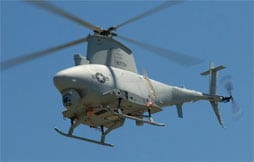
Think of Rear Adm. Robert Girrier, the head of the Navy’s new N99 directorate for unmanned systems, as the service’s rapid development pioneer for robots, drones and unmanned underwater vehicles (UUVs).Through prototyping and fleet experimentation, Girrier wants to quicken the pace of development and ensure the end user is getting what needs, he told reporters on Friday. One of the goals of N99 is to connect sailors and Marines with innovative new unmanned systems that haven’t yet made it to…












